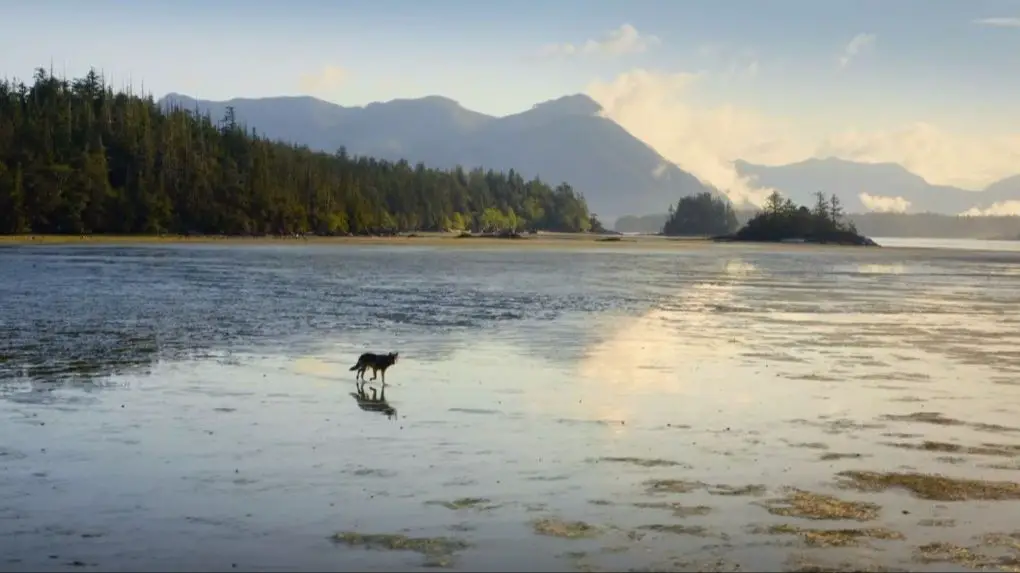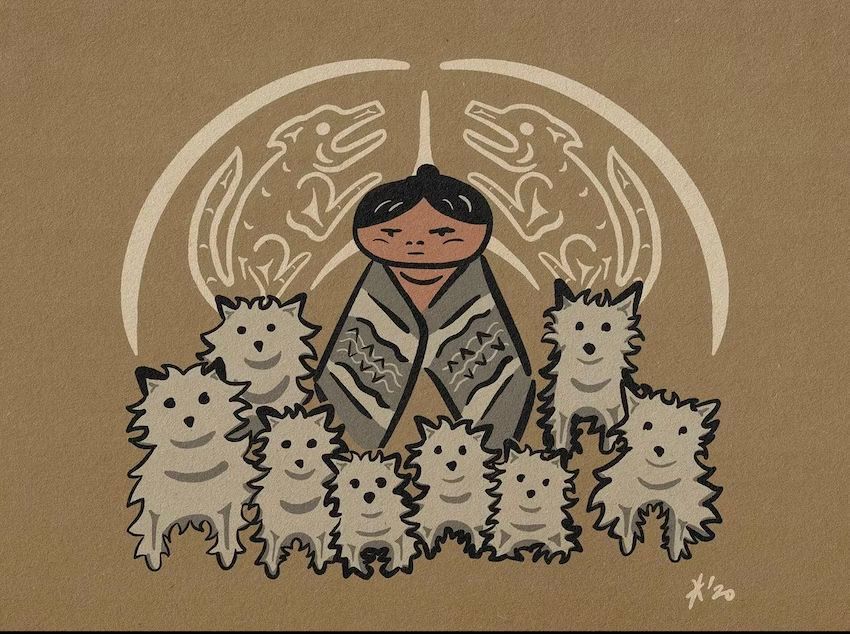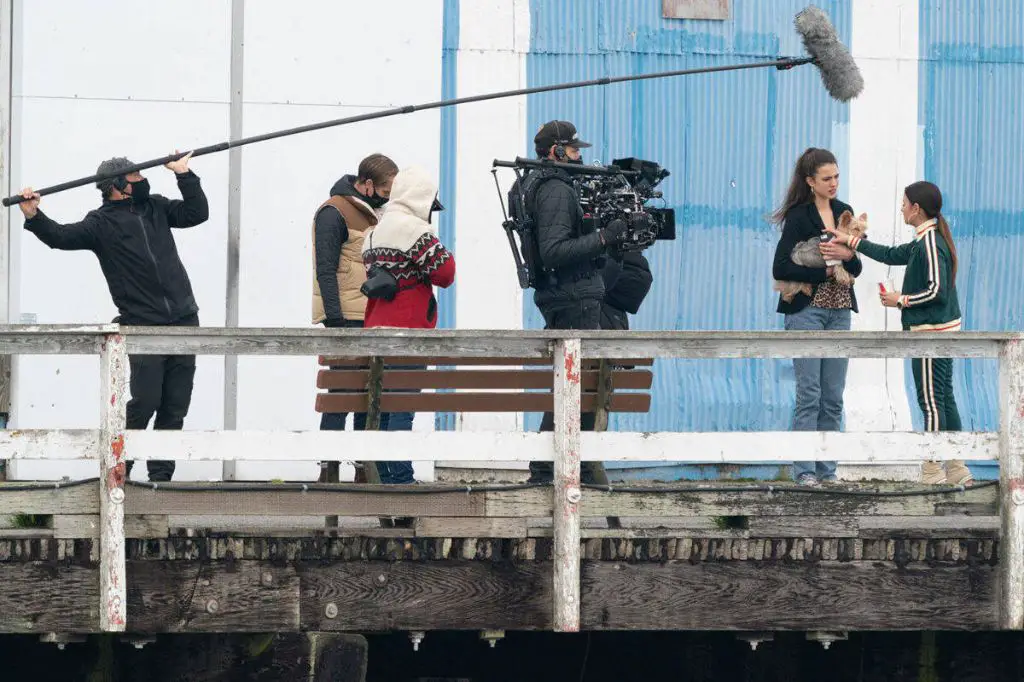Introduction
Far From Home: The Adventures of Yellow Dog is a 1995 survival adventure drama film directed by Phillip Borsos. It is based on the book written by Bill Wallace and stars Jesse Bradford as a boy named Angus who befriends and forms a bond with a stray dog while staying with his family in the wilderness of British Columbia, Canada. The film follows Angus and Yellow Dog as they embark on various adventures together and face challenges in the harsh but beautiful natural environment. Despite receiving mixed reviews upon its initial theatrical release, Far From Home has since become a cult classic among adventure and animal lovers.
About the Film
Far from Home: The Adventures of Yellow Dog is a 1995 family adventure film directed by Phillip Borsos and written by Jeanne Rosenberg. It is based on the 1961 children’s novel Yellow Dog by Bill Wallace. The film belongs to the adventure genre and features a young boy’s bond with his dog in the wilderness of the Pacific Northwest.

Far from Home: The Adventures of Yellow Dog was released on August 4, 1995 by 20th Century Fox.
Filming Locations
The primary shooting location for The Adventures of Yellow Dog was Vancouver Island in British Columbia, Canada. Parts of the movie were filmed in the small town of Tofino on the island’s west coast, known for its remote beaches and old growth forests. Other Vancouver Island locations used for filming included the Kennedy River and Clayoquot Sound.
Additional shooting took place at various wilderness areas in British Columbia, according to IMDB. These included Coquihalla Canyon Provincial Park and Golden Ears Provincial Park. The movie highlights the province’s natural landscapes, featuring forests, rivers, beaches, and mountains as backdrops.
Vancouver Island
Vancouver Island is the largest island off the west coast of Canada. Located in British Columbia, it has an area of 12,079 square miles (31,285 km2) and is separated from mainland British Columbia by the Strait of Georgia and the Queen Charlotte Strait (Wikipedia, 2023). The island has a mild oceanic climate with temperatures around 40-60°F in the winter and 60-80°F in the summer. It receives substantial rainfall, especially on the western and northern regions facing the Pacific Ocean and ranges of steep mountains along its spine (Britannica, 2023).
Vancouver Island has great ecological diversity and is home to unique indigenous cultures. More than half of the island is forested, with western red cedar, Sitka spruce, Douglas fir and western hemlock as the primary tree species. Large mammals found on the island include Roosevelt elk, black-tailed deer, cougar, black bear, and wolf. The island was originally inhabited by Coast Salish peoples, including the Nuu-chah-nulth, Kwakwaka’wakw and Coast Salish. European settlement began in the mid-1800s, focused on resource extraction. Today, forestry, mining and tourism are important industries (New World Encyclopedia, 2023).
Tofino

Tofino is a small town located on the west coast of Vancouver Island in British Columbia. With a population of only around 2,000 people, Tofino is known for its rugged natural beauty and as a hotspot for surfing and other ocean activities (Tourism Tofino). Tofino is located within the Clayoquot Sound UNESCO Biosphere Reserve, which contains rich rainforests and diverse wildlife. The Tofino area has been home to the Nuu-chah-nulth First Nations for thousands of years.
Some of the key attractions and activities in Tofino include surfing, whale watching, kayaking, hiking trails, beaches, and hot springs. Popular beaches include Long Beach, Chesterman Beach, Cox Bay, and Tonquin Beach. The Pacific Rim National Park Reserve located near Tofino contains beautiful landscapes including the Long Beach Unit. Other natural highlights are the Clayoquot Sound fjords and Meares Island. In town, the Tofino Botanical Gardens showcase native plants.
Tofino has grown as a tourist destination since the 1960s. Increasing numbers of surfers discovered the area’s waves, followed by other nature lovers and travelers. Today, tourism is a major part of the local economy along with fishing. Tofino offers eco-tourism adventures as well as relaxing getaways with incredible scenery.
Long Beach
Long Beach is located in the Pacific Rim National Park Reserve on the west coast of Vancouver Island in Tofino, British Columbia. Stretching over 10 miles, Long Beach is the longest beach on Vancouver Island and is known for its sandy beaches, old growth forests, and diverse wildlife
According to Long Beach – Tofino, Long Beach features sandy beaches and surf stretching as far as the eye can see. The sandy beaches provide plenty of room for beachgoers to spread out and enjoy the scenic views. Long Beach is also popular for beach activities like surfing, kayaking, and swimming in the cool Pacific waters.
The beach is surrounded by lush old growth forests and is home to diverse wildlife like bears, wolves, whales, and birds. Visitors may even catch sight of migrating gray whales during the winter and spring months. The combination of sandy beaches, forests, and wildlife make Long Beach a unique destination along the Vancouver Island coastline.
Indigenous Communities
Vancouver Island has been home to Indigenous peoples for thousands of years, long before European contact. The island is part of the traditional territories of the Coast Salish, Nuu-chah-nulth, and Kwakwaka’wakw First Nations. There are over 50 First Nations bands with reserves located across Vancouver Island (https://viea.ca/business-living-on-vancouver-island/first-nations/).

In particular, Tofino and Long Beach where The Adventures of Yellow Dog was filmed are within the traditional territories of the Tla-o-qui-aht and Ahousaht First Nations. These Nuu-chah-nulth communities have lived in this region for thousands of years, relying on the natural bounty of the oceans and forests. Their history is deeply connected to the landscapes seen throughout the film (https://www.indigenousbc.com/places-to-go/vancouver-island/).
First Nations culture remains an important part of life on Vancouver Island today. Visitors can learn about Indigenous history and traditions by visiting cultural centers, galleries, museums and taking part in tours and experiences offered by First Nations operators (https://vancouverisland.travel/itineraries/where-to-find-first-nations-culture-attractions-on-vancouver-island/).
Wildlife
Vancouver Island is home to an abundance of wildlife, including many species featured prominently in The Adventures of Yellow Dog such as wolves, bears, bald eagles, seals, sea lions, whales, and salmon. The film captured footage of these animals in their natural habitats across Vancouver Island, especially around Tofino and Long Beach.
The region is known for its thriving population of gray wolves, also called coastal sea wolves. Vancouver Island has the highest density of wolves in North America. In the film, wolves were shown hunting salmon during spawning season and interacting with the protagonist. Gray whales migrating along the coast were also filmed, capturing mothers and calves swimming together. Bald eagles nesting near the shoreline made appearances as well.
Marine mammals like Steller sea lions and harbor seals are common sights. But the biggest wildlife stars of the movie were the pods of humpback whales spotted feeding offshore. The crew was fortunate to film the massive yet graceful humpbacks breaching and diving. Capturing all this diverse Vancouver Island wildlife against such dramatic natural backdrops gave the movie its sense of wilderness adventure.
Impact on Location
Filming for Far From Home had a significant impact on the locations where it took place, especially the small communities of Vancouver Island and Tofino. The production brought in hundreds of cast and crew members to these remote areas for an extended period. This influx of people provided a boost to local businesses and tourism operators during the off-season when activity is typically slow (https://www.vancouverisawesome.com/courier-archive/news/spider-man-far-from-home-takes-over-tofino-3094192). However, it also caused strains on infrastructure and services that are designed for much smaller populations. Locals reported traffic delays, crowded beaches and trails, and other disruptions from the large-scale production (https://www.islander.ca/spider-man-far-from-home-filmed-in-tofino/). There were also environmental impacts, such as increased waste and pollution, that required mitigation efforts by the production company.

On the positive side, Far From Home provided jobs for many local residents, both on set and in supporting roles like catering and transportation. It also gave exposure to the natural beauty and Indigenous culture of the region, potentially boosting future tourism. The producers made efforts to hire Indigenous crew members and actors, as well as consult local First Nations on appropriate use of traditional lands (https://www.ic.gc.ca/eic/site/108.nsf/eng/00009.html). Still, balancing the economic benefits and drawbacks of location filming remains an ongoing discussion in small communities like Tofino.
Conclusion
Far From Home: The Adventures of Yellow Dog is a family adventure film that tells the heartwarming story of a boy named Angus and his rescued yellow Labrador Retriever. Though filmed in multiple locations across Vancouver Island, the wilderness of Tofino and Long Beach Natural Park served as the primary backdrops and helped establish the film’s Pacific Northwest setting.
The film highlighted the pristine natural landscapes of the region and sparked interest in visiting the filming locations. It also raised awareness about the indigenous communities of Vancouver Island and their deep connection to the land. While the film ran into some controversy for possible disruption to wildlife habitats during filming, overall it left a positive legacy for promoting adventure stories for families and appreciating the bond between humans and animals.
Through Angus and Yellow’s unlikely friendship and perseverance through adversity, Far From Home underscores the themes of loyalty, determination, and believing in yourself. Audiences continue to find inspiration in the film decades after its original release.
